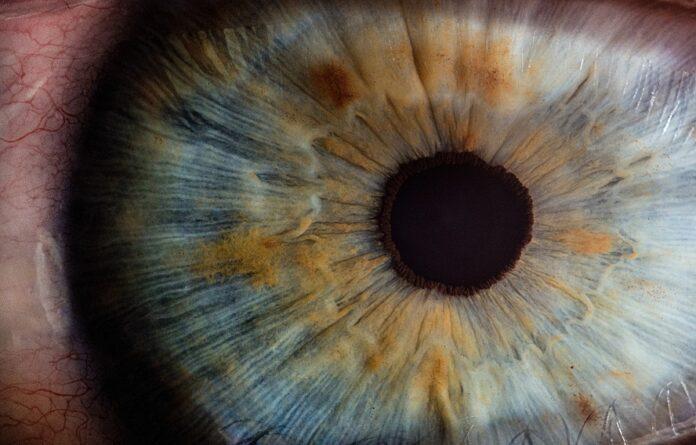Scientists have developed the first patient-derived stem cell modelo of albinism. The model will help studying eye conditions related to oculocutaneous albinism (OCA).
Stem cells ay hindi dalubhasa. Hindi sila makakagawa ng anumang partikular na function sa katawan ngunit maaari nilang hatiin at i-renew ang kanilang sarili sa loob ng mahabang panahon at may potensyal na maging dalubhasa at umunlad sa maraming iba't ibang uri sa katawan tulad ng mga selula ng kalamnan, mga selula ng dugo, mga selula ng utak atbp.
Stem cells are present in our bodies at all stages of life, from embrayo to adulthood. Embryonic stem cells (ESCs) or fetal stem cells ay makikita sa pinakamaagang yugto habang ang mga adult stem cell na nagsisilbing sistema ng pag-aayos para sa katawan ay makikita sa pagtanda.
Stem cells can be grouped into four: embryonic stem cells (ESCs), adult stem cells, kanser stem cells (CSCs) and induced pluripotent stem cells (iPSCs). Embryonic stem cells (ESCs) are derived from inner mass cells of the blastocyst-stage of mammalian embryo that are three to five days old. They can self-renew indefinitely and differentiate into cell types of all three germ layers. On the other hand, adult stem cells serve as a repair system to maintain cell homeostasis in tissues. They can replace dead or injured cells but have limited proliferation and differentiation potential in comparison with ESCs. Cancer stem cells (CSCs) arise from normal stem cells that undergo gene mutations. They initiate tumours forming a large colony or clones. Cancer stem cells play important roles in malignant tumours hence targeting them could provide a way to treat cancers.
Ang induced pluripotent stem cells (iPSCs) ay nagmula sa mga adult na somatic cells. Ang kanilang pluripotency ay artipisyal na na-induce sa laboratoryo sa pamamagitan ng reprogramming somatic cells sa pamamagitan ng mga gene at iba pang mga kadahilanan. Ang mga iPSC ay parang mga embryonic stem cell sa paglaganap at pagkita ng kaibhan. Ang unang iPSC ay binuo mula sa murine fibroblast ni Yamanaka noong 2006. Simula noon, maraming mga human iPSC ang binuo mula sa mga sample na partikular sa pasyente. Dahil ang genetics ng pasyente ay makikita sa genetics ng iPSCs, ang mga reprogrammed na somatic cell na ito ay ginagamit upang magmodelo ng mga genetic na sakit at binago ang pag-aaral ng mga genetic disorder ng tao.
Ang isang modelo ay isang hayop o mga cell na nagpapakita ng lahat o ilan sa mga proseso ng pathological na naobserbahan sa isang aktwal na sakit. Ang pagkakaroon ng isang eksperimentong modelo ay mahalaga para sa pag-unawa sa pag-unlad ng sakit sa mga antas ng cellular at molekular na tumutulong sa pagbuo ng mga therapies upang gamutin. Nakakatulong ang isang modelo sa pag-unawa kung paano nagkakaroon ng sakit at sa pagsubok ng mga potensyal na paraan ng paggamot. Halimbawa, matutukoy ng isa ang mga epektibong target ng gamot sa tulong ng isang modelo o screen ng maliliit na molekula na maaaring magpababa ng kalubhaan at huminto sa pag-unlad ng sakit. Matagal nang ginagamit ang mga modelo ng hayop ngunit may ilang mga disadvantages. Dagdag pa, ang mga modelo ng hayop ay hindi angkop para sa mga genetic disorder dahil sa genetic dissimilarities. Ngayon, ang mga stem cell ng tao (embryonic at induced pluripotent) ay lalong ginagamit sa modelo ng mga sakit ng tao.
Ang pagmomodelo ng sakit gamit ang mga iPSC ng tao ay matagumpay na nagawa para sa ilan kundisyon tulad ng lateral sclerosis, mga sakit sa dugo, diabetes, Huntington's disease, spinal muscular atrophy atbp. Mayroong magandang bilang ng mga modelo ng iPSC ng tao of human neural diseases, congenital heart diseases and other genetic kaguluhans.
Gayunpaman, hindi available ang human iPSC model of albinism hanggang 11 Enero 2022 nang ang mga siyentipiko sa National Eye Institute (NEI) na bahagi ng National Institutes of Health (NIH) ay nag-ulat ng pagbuo ng isang human iPSC-based na in vitro na modelo para sa oculocutaneous albinism (OCA)
Oculocutaneous albinism (OCA) is a Genetic disorder affecting pigmentation in the eye, skin, and hair. The patients suffer eye problems like reduced best-corrected visual acuity, reduced ocular pigmentation, abnormalities in fovea development, and/or abnormal crossing of optic nerve fibres. It is thought that improving eye pigmentation could prevent or rescue some of the vision defects.
The researchers developed an in-vitro model for studying pigmentation defects in human retinal pigment epithelium (RPE) and showed that the retina pigment epithelium tissue derived in vitro from patients recapitulates the pigmentation defects seen in albinism. This is very interesting in view of the fact that animal models of albinism are unsuitable and there is limited human cell lines to study melanogenesis and pigmentation defects. The patient-derived OCA1A- and OCA2-iPSCs developed in this study can be a renewable and reproducible source of cells for the production of target cell and/or tissue types. In vitro derived OCA tissues and OCA-iRPE will allow deeper understanding of how melanin formation takes place and identify molecules involved in pigmentation defects, and further probe for molecular and/or physiologic differences.
Ito ay isang napaka makabuluhang hakbang pasulong patungo sa layunin ng paggamot sa mga kondisyong nauugnay sa oculocutaneous albinism (OCA).
***
Sanggunian:
- Avior, Y., Sagi, I. & Benvenisty, N. Pluripotent stem cells sa pagmomodelo ng sakit at pagtuklas ng gamot. Nat Rev Mol Cell Biol 17, 170–182 (2016). https://doi.org/10.1038/nrm.2015.27
- Chamberlain S., 2016. Pagmomodelo ng sakit gamit ang mga iPSC ng tao. Human Molecular Genetics, Volume 25, Isyu R2, 1 Oktubre 2016, Mga Pahina R173–R181, https://doi.org/10.1093/hmg/ddw209
- Bai X., 2020. Pagmomodelo ng Sakit na Nakabatay sa Stem Cell at Cell Therapy. Mga Cell 2020, 9(10), 2193; https://doi.org/10.3390/cells9102193
- George A., et al 2022. In Vitro Disease Modeling ng Oculocutaneous Albinism Type I at II Gamit ang Human Induced Pluripotent Stem Cell-Derived Retinal Pigment Epithelium (2022). Mga Ulat sa Stem Cell. Volume 17, Isyu 1, P173-186, Enero 11, 2022 DOI: https://doi.org/10.1016/j.stemcr.2021.11.016
***






































